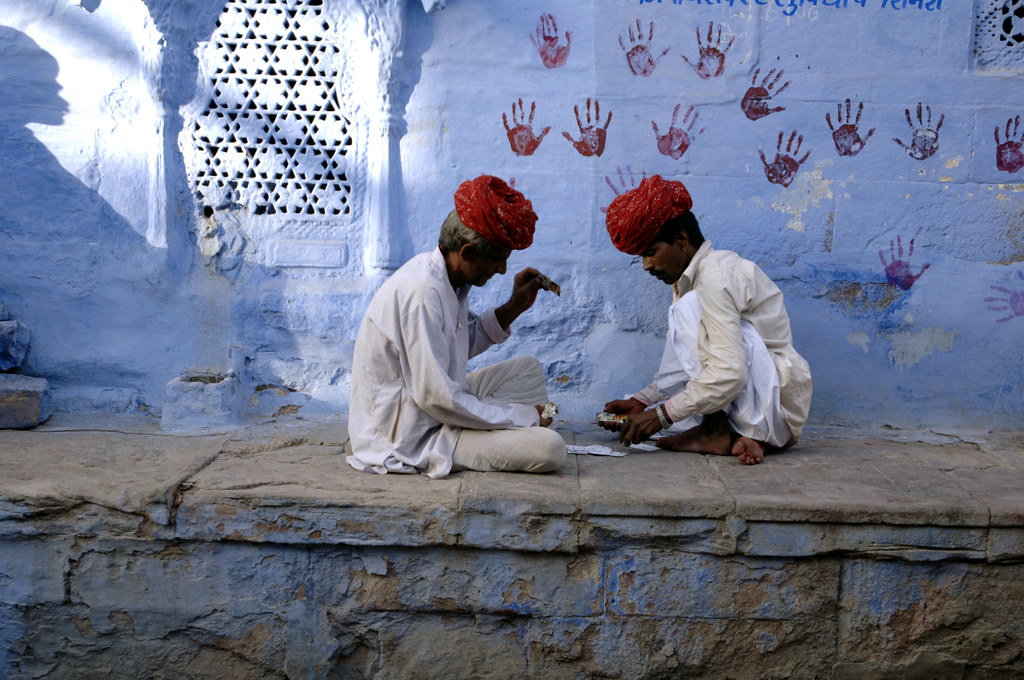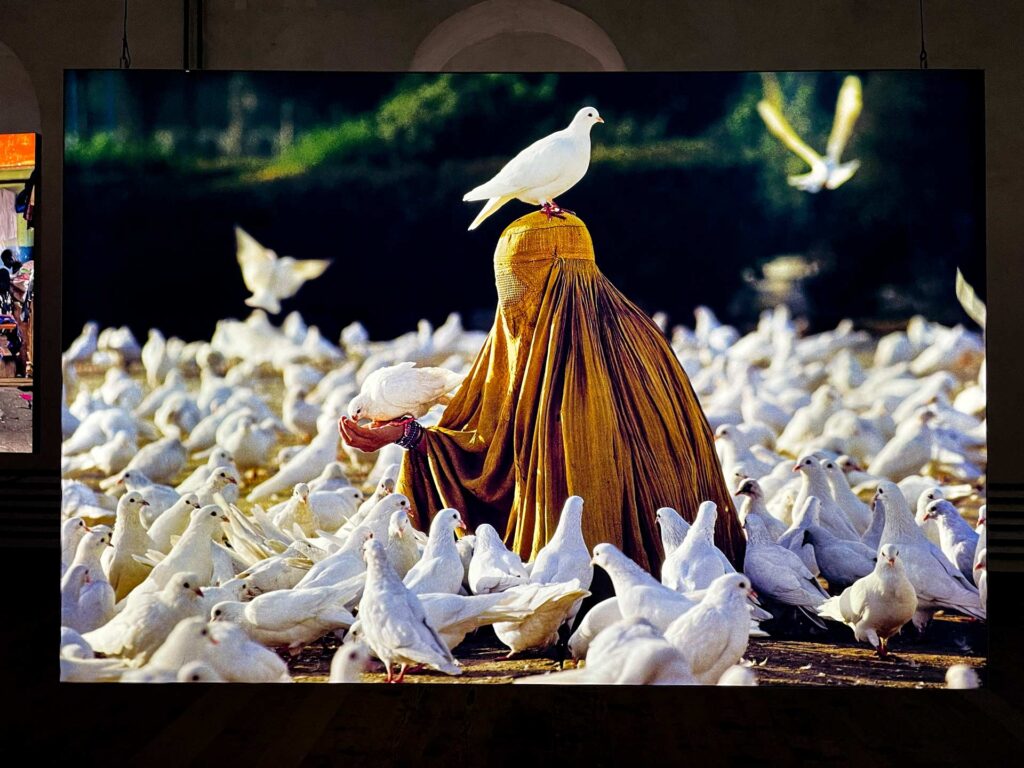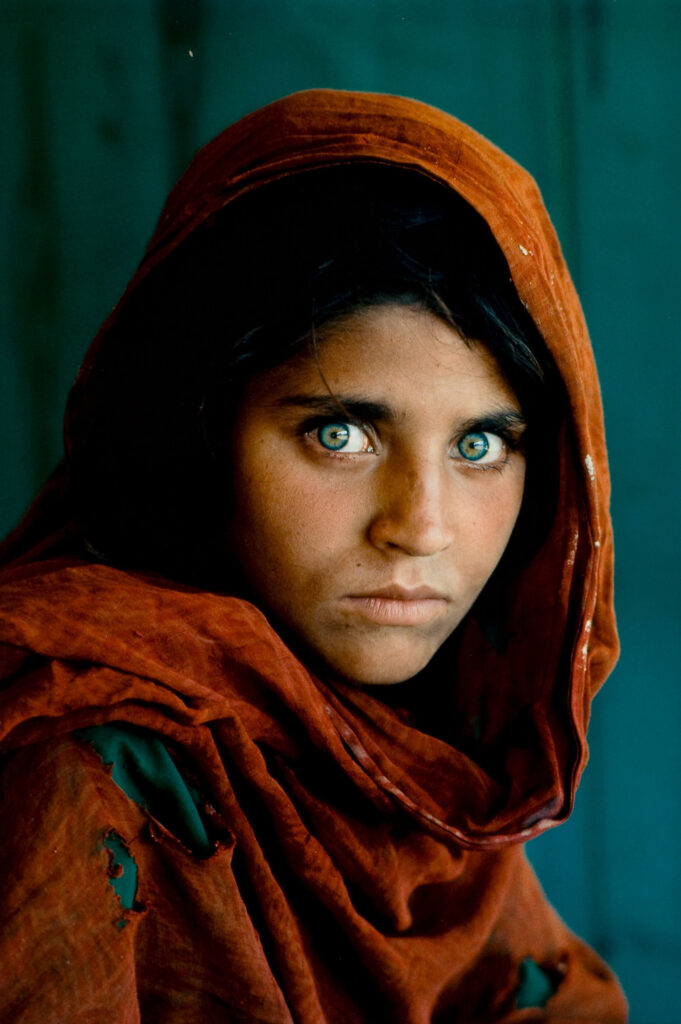Steve McCurry: A Legendary Photographer
Steve McCurry is one of the most celebrated photographers of our time. His career has spanned more than four decades, and his work has shaped the world’s understanding of photojournalism and cultural photography. McCurry is known for his evocative images of people and places, particularly in regions affected by war, poverty, and social change. His portrait of an Afghan girl, which became a symbol of refugee struggles worldwide, is one of the most iconic photographs in history. Throughout his career, McCurry has used photography not just as an art form but as a way to tell powerful stories about humanity.

Early Life and Career Beginnings
Steve McCurry was born on April 23, 1950, in Philadelphia, Pennsylvania. He grew up in a middle-class family, and although he showed an early interest in art and design, it wasn’t until he attended Pennsylvania State University that he became interested in photography. He graduated with a degree in Theatre Arts in 1974, but it was his love for visual storytelling that led him to take up photography.
After graduation, McCurry worked as a freelance photographer. He initially struggled to gain recognition, working on assignments that ranged from advertising photography to magazine features. He began his career as a photojournalist, capturing the everyday lives of ordinary people. It wasn’t long before McCurry realized that photojournalism allowed him to tell more powerful stories, especially by capturing people in different cultural and historical contexts.
Breakthrough in Afghanistan: The Afghan Girl
McCurry’s major break came in 1979 when he traveled to Afghanistan just before the Soviet invasion. Despite the growing conflict, he managed to cross the border from Pakistan into Afghanistan disguised in traditional clothing. His courage and resourcefulness paid off when he came across a young Afghan refugee girl in a camp near Peshawar, Pakistan, in 1984.
The girl’s intense green eyes, framed by a red scarf, made for an unforgettable image. McCurry photographed her in the camp, not knowing that the image would soon become one of the most recognized portraits in history. The photograph was published on the cover of National Geographic in June 1985 and instantly became a symbol of the refugee crisis and the struggles of people displaced by war.
The Afghan Girl’s portrait, known worldwide, has since been reproduced countless times, and the girl, later identified as Sharbat Gula, has become a global symbol of resilience and the human cost of conflict.
Style and Approach to Photography
Steve McCurry is often described as a “color photographer,” and his use of vivid colors is one of the hallmarks of his style. He has said that color plays a crucial role in capturing the emotion of a moment. His mastery of color can be seen in his iconic images of people and places, where bold hues stand out and create a powerful emotional impact.
While McCurry is known for his portraits, his approach to photography goes beyond just capturing a person’s face. His images often tell a story about the person’s environment, culture, and the challenges they face. He believes that a good photograph should evoke a sense of connection between the viewer and the subject.
McCurry’s photojournalistic work is also notable for his ability to capture candid moments. Unlike staged photography, McCurry often works in environments where he can blend in and photograph people in natural, unposed moments. His ability to gain the trust of his subjects is key to his success, especially in volatile regions where his presence as a foreigner could be met with suspicion.

Notable Works and Projects
Throughout his career, Steve McCurry has traveled to over 100 countries, documenting everything from the Indian subcontinent to the Middle East. Some of his most famous works include:
- The Afghan Girl: As mentioned earlier, this photograph of Sharbat Gula is McCurry’s most iconic image and continues to define his career.
- The Woman of Kabul: In this image, McCurry captures a woman in Afghanistan, her face hidden beneath a blue burqa, a powerful symbol of the country’s patriarchal culture during a period of conflict.
- Taj Mahal at Sunrise: This serene image of the Taj Mahal bathed in early morning light captures the beauty of India’s most famous landmark and its surrounding reflections.
- Children of Afghanistan: A series of images taken during McCurry’s time in Afghanistan, showing children living in difficult conditions amidst the ongoing war.
- Indian Beggars: A series of photographs from McCurry’s travels to India, depicting the lives of beggars in the streets, capturing their dignity despite poverty.
McCurry’s travel photography is also widely admired, particularly his ability to photograph landscapes and historical sites that reflect the cultural diversity of the world. His images go beyond just documenting places; they highlight the history and emotional significance of the locations he visits.

Awards and Recognition
Over the years, McCurry has received numerous accolades for his photographic work. Some of the most significant awards include:
- Robert Capa Gold Medal: McCurry was awarded the prestigious medal for his photography of the Afghan conflict in 1980, acknowledging his courage in capturing images from a war zone.
- National Press Photographers Association (NPPA) awards: For his outstanding contributions to photojournalism, McCurry has won numerous NPPA awards.
- Magazine Publications: His work has been featured in major publications, including National Geographic, Time, Newsweek, and The New York Times Magazine. His images have been widely published in books and magazines around the world.
- Exhibitions: McCurry’s work has been displayed in galleries and museums worldwide, including the Smithsonian Institution and the International Center of Photography in New York.
He has also written and published several photography books, with some of the most famous being “Steve McCurry: The Iconic Photographs” and “Portraits”. These books showcase his best-known images, as well as his thoughts and experiences from the field.

The Legacy of Steve McCurry
Steve McCurry’s photographs are more than just beautiful images; they are powerful stories about humanity, culture, and the challenges that people face around the world. His legacy as a photographer extends beyond his famous images like the Afghan Girl, influencing the way photojournalism is practiced today. His ability to connect with people, even in the most difficult environments, and his use of photography to draw attention to important global issues, have made him a giant in the world of photography.
As McCurry continues to travel the globe, his photos remain as relevant as ever, and his commitment to documenting the human experience remains unwavering. His work is an enduring reminder of the power of photography to create change and inspire empathy across cultures and borders.
Conclusion
Steve McCurry’s career is a testament to the power of storytelling through images. His work as a photographer has not only earned him fame but has also made him an influential figure in photojournalism. Through his lens, McCurry has shown the beauty, struggles, and resilience of people from all walks of life. Whether capturing the effects of war, the serenity of landscapes, or the power of human expression, McCurry’s photographs continue to move and inspire viewers worldwide.
Steve McCurry’s career serves as an example of how powerful images can transcend time and space, telling stories that connect us to the lives of others, no matter where they come from. His work remains an enduring legacy of both beauty and compassion in the world of photography.

